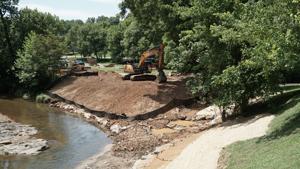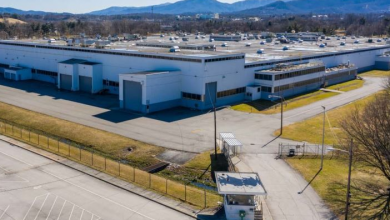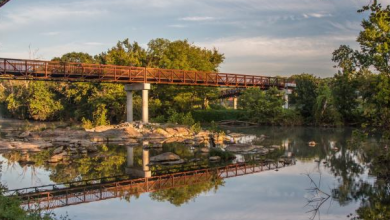Project stabilizes Pigg River bank at Lynch Park

ROCKY MOUNT — Throughout the month of July, crews worked on a Pigg River Bank stabilization project in Lynch Park that will protect surrounding infrastructure and recreational resources.
Where the Pigg River bends east in the park, the flow of water and resulting erosion have endangered a road, trail and bridge located just yards away from the north bank.
“This project here…is a little over $100,000,” Bill Tanger, Friends of the Rivers of Virginia chairman, said.
FORVA received funding for the bank stabilization project through the National Fish and Wildlife Foundation’s Impact-Directed Environmental Accounts department. According to the NFWF website, the IDEA department “serves as a manager and trustee for funds arising from legal and regulatory actions involving natural resources and the environment.” The funds for the Lynch Park project came from federal cases involving Duke Energy subsidiaries.
“The intent is to protect this bank, that trail, that road and this bridge, in addition to restoring habitat, because if you let it unchecked it would just be more and more sediment going in that would affect the Roanoke logperch. That’s our hook,” David Byrd said.
Byrd is the coordinator of the U.S. Fish & Wildlife Service’s Partners for Fish and Wildlife Program in Virginia. FWS and the Partners Program are involved in the bank stabilization project, along with FORVA. Other entities involved in the project include Shenandoah StreamWorks—the company doing the bank stabilization work—and the town of Rocky Mount.
FORVA’s interest lies in protecting the park infrastructure, which Tanger said is in jeopardy. FORVA has been involved with various river and blueway improvement projects over the years, including a dam removal that has substantially changed the Lynch Park area, Byrd said.
On Monday, July 25, several hundred yards away from a couple of excavators working on the bank stabilization project, a group of children played in the shallow water at the end of a boat slip in Lynch Park. A decade ago, Byrd said, he would be up to his chin taking samples in that same spot.
“People can safely go through here now, they can play here,” Byrd said.
The bank stabilization will preserve those gains and the ability of park-goers to enjoy the river.
Shenandoah StreamWorks is using stone, cobble and riverbed material to reinforce the path of a small stream channel that passes under a walking bridge and empties into the river. They are also installing a rock vein on the north bank, which juts into the water near the river bend and will redirect water into the channel during higher flows.
“That comes out at a specific angle and also drops at a specific angle down to the bed. … Water, during higher water events, it comes up (the rock vein) and as it goes uphill, it slows and it spills back into the channel and protects the bank,” Byrd said. “It actually directs the flow away…it slows velocity and then it directs water back into the channel where you want it.”
Additionally, Byrd said, the rock vein will be backed up by a rock wall to protect the bank during serious flooding events.
“Talking to some gentleman down here, he said in ‘85 it flooded up to the top of the (Riverside Minute) Market,” Byrd said. “I’ve seen it flooded to the intersection (of Scuffling Hill Road and South Main Street).”
On the flat parts of the bank, Byrd said they will put down seed, covered by hay and jute netting to keep it in place while it grows. Later, they will come back and place live whips and stakes for further stabilization.
“Those will grow into trees and shrubs—in this case probably a lot more shrubs,” Byrd said.
In a couple of years, he said, the area will have grown over nicely.




